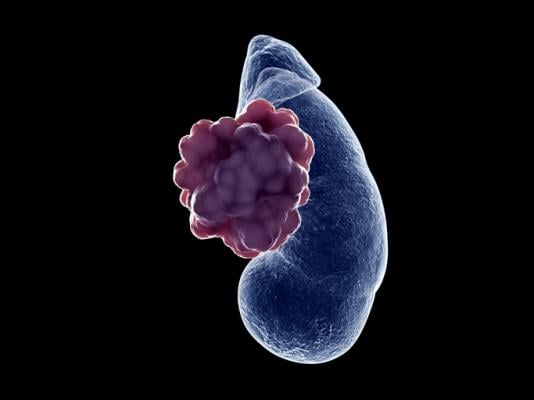
October 1, 2023 — Older adults diagnosed with kidney tumors that are not suitable for surgery may benefit from targeted, high-dose radiation, a new study from Australian and Dutch researchers suggests.
A multi-institutional phase II study – TransTasman Radiation Oncology Group (TROG) FASTRACK II – found 100% local control and cancer-specific survival for longer than three years among patients who were treated non-invasively for inoperable kidney cancer with stereotactic ablative body radiotherapy (SABR). Findings will be presented today at the American Society for Radiation Oncology (ASTRO) Annual Meeting.
Previous smaller, single institution studies showed promise for stereotactic radiation treatments with patients whose kidney tumors are inoperable, yet FASTRACK II is the first study to test SABR’s efficacy in a large, multi-institutional clinical trial.
“Our study demonstrated that a novel treatment delivered in an outpatient setting is able to achieve unprecedented efficacy for patients with inoperable kidney cancer,” said lead study author Shankar Siva, PhD, a radiation oncologist at the Peter MacCallum Cancer Centre and a professor at the University of Melbourne in Australia. “There’s an unmet need for curing this type of cancer, and our findings point to the potential of radiation therapy to address that need.”
As the population ages, the incidence of kidney cancer in older adults is increasing globally, with the greatest increase in people over 70, who also have lower rates of survival. Worldwide, kidney cancer is the 6th most diagnosed cancer in men and 10th in women. Surgery has been the standard of care, either to remove the tumor and surrounding margins or to remove the entire kidney and surrounding tissue.
Yet many older people with renal cell carcinoma have unique challenges that make it difficult to treat them surgically, said Dr. Siva. “People might have other medical issues such as high blood pressure or diabetes, things that place them at higher risk for complications from surgery. They may have tumors in areas that are difficult to operate on, or where surgery may lead to dialysis.”
He said, “our research clearly defines a new population of patients who will benefit from stereotactic radiation. These patients often don’t have other viable treatment options, so we are excited to see that radiation therapy can be effective for them.”
SABR, also known as stereotactic body radiation (SBRT), can shrink or destroy tumors by targeting them directly with high doses of radiation delivered in a small number of outpatient sessions.
In this non-randomized, prospective study, Dr. Siva and his colleagues treated 70 patients who were diagnosed with inoperable, high-risk kidney tumors or who declined surgery for their renal cell cancer. The median patient age was 77 years (range 47-91), and patients had a single lesion.
Participants in the trial were treated with SABR in one or three sessions at seven Australian centers and one in the Netherlands. Treated tumors were relatively large, said Dr. Siva, on average 4.7 centimeters. Patients with tumors smaller than 4 cm received a single fraction of radiation (n=23), and those with tumors larger than 4 cm received three fractions (n=47).
None of the patients experienced a local progression of their kidney cancer during the trial lifetime (median follow-up 43 months), nor did any patients die from cancer. Overall survival was 99% one year after SBRT and 82% at three years. One patient experienced a distant recurrence of their cancer.
Side effects were relatively modest, with no grade 4 or 5 toxicities observed. Seven patients (10%) experienced grade 3 adverse events, most commonly abdominal pain (3 patients). 51 patients (73%) had a grade 1-2 treatment-related event, and 11 patients (16%) experienced no adverse events.
Kidney function was assessed by measuring patients’ estimated glomerular filtration rate (eGFR); the average eGFR declined by 10.8 mLs/min at one year and 14.6 mLs/min at two years after treatment, indicating mild-to-moderate kidney stress. Only one patient required dialysis following treatment. Overall, said Dr. Siva, there was a modest drop in kidney function and that plateaued after two years.
Dr. Siva attributed the high efficacy rate and the ability to preserve kidney function to rigorous quality control, as well as the effectiveness of stereotactic radiation. He also said the findings of this phase II trial justify designing a randomized phase III trial to compare stereotactic radiation to surgery as the primary treatment modality for patients with operable kidney cancer.
“Given a choice between the two, I believe a lot of patients would opt for non-invasive radiation,” he said.
For more information: www.astro.org


 December 11, 2025
December 11, 2025 









